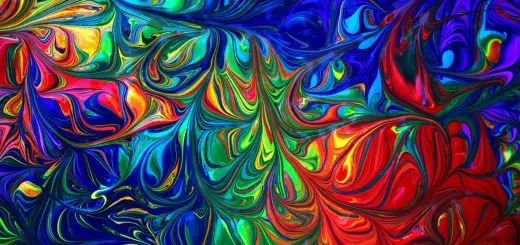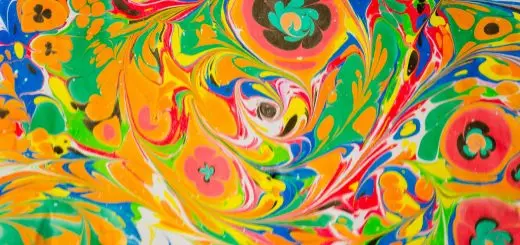Reiki Wisdom: Ancient Teachings for Modern Well-Being

Looking for more amazing products? Check out our online store and explore our collection here! Happy shopping!
Before diving in, please note: This post is for informational purposes only. If you’d like to know more about how we approach topics, feel free to check out our friendly Disclaimer Page.
Hey there, amazing readers! 
We’re committed to delivering quality posts, and your support (even just sticking around despite the ads) means everything to us. So, bear with us, and thanks for helping us keep the good vibes rolling. Now, on to the fun stuff!
TRANSLATE BUTTON AT THE END OF THE ARTICLE
Reiki Wisdom: Ancient Teachings for Modern Well-Being
Overview
Reiki, a Japanese healing technique that promotes relaxation and stress reduction, has gained popularity in recent years as a holistic approach to well-being.
Rooted in ancient teachings and wisdom, Reiki offers a unique way to balance the mind, body, and spirit, allowing individuals to tap into their own natural healing abilities.
In this article, we will delve into the principles and practices of Reiki, exploring its philosophy, energy centers, symbols, techniques, and its integration into daily life.
We will also address the scientific perspective on Reiki and its potential benefits for stress and anxiety relief, self-discovery, and healing others.
Whether you are new to Reiki or have some experience, this article aims to provide a comprehensive understanding of Reiki and its potential to enhance your overall well-being.
Understanding the Roots of Reiki
Reiki, originating in Japan in the early 20th century, is a holistic healing system based on the concept of "ki" or life energy.
Developed by Mikao Usui, a Japanese Buddhist monk, Reiki is said to have been rediscovered through ancient Buddhist texts.
Usui’s teachings and practices formed the foundation of Reiki, which focuses on channeling universal life energy through the practitioner’s hands to promote healing and balance.
Reiki is based on the belief that energy blockages in the body can lead to physical, emotional, and spiritual imbalances, and by removing these blockages, one can restore harmony and well-being.
The Philosophy Behind Reiki Healing
At the core of Reiki lies a philosophy that emphasizes the interconnectedness of all things and the power of unconditional love and compassion.
Practitioners of Reiki believe that by tapping into the universal life energy, they can facilitate healing and promote well-being.
The five principles of Reiki, known as the Reiki Principles, serve as a guide for practitioners to cultivate a positive mindset and align with the healing energy.
These principles include:
Just for today, I will not be angry.
Just for today, I will not worry.
Just for today, I will be grateful.
Just for today, I will do my work honestly.
Just for today, I will be kind to every living thing.
By following these principles, individuals can cultivate a state of mindfulness, gratitude, and compassion, which are believed to enhance the effectiveness of Reiki healing.
Exploring the Energy Centers in Reiki
Reiki practitioners believe that the human body is composed of seven main energy centers, known as chakras.
These chakras are believed to be spinning wheels of energy that correspond to different aspects of our physical, emotional, and spiritual well-being.
Each chakra is associated with a specific color, element, and area of the body.
The seven chakras in Reiki are:
Root Chakra (Muladhara): Located at the base of the spine, this chakra is associated with stability, security, and grounding.
Sacral Chakra (Svadhisthana): Found in the lower abdomen, this chakra represents creativity, sexuality, and emotional balance.
Solar Plexus Chakra (Manipura): Located in the upper abdomen, this chakra is associated with personal power, confidence, and self-esteem.
Heart Chakra (Anahata): Located at the center of the chest, this chakra represents love, compassion, and emotional healing.
Throat Chakra (Vishuddha): Found in the throat area, this chakra is associated with communication, self-expression, and authenticity.
Third Eye Chakra (Ajna): Located between the eyebrows, this chakra represents intuition, wisdom, and spiritual insight.
Crown Chakra (Sahasrara): Located at the top of the head, this chakra is associated with spiritual connection, higher consciousness, and enlightenment.
In Reiki, practitioners focus on balancing and harmonizing these chakras to promote overall well-being and healing.
Unleashing the Power of Reiki Symbols
Symbols play a significant role in Reiki, as they are believed to enhance the flow of energy and aid in healing.
Reiki symbols are ancient Japanese characters that carry specific meanings and intentions.
There are three main symbols used in Reiki:
Cho Ku Rei: Also known as the Power Symbol, Cho Ku Rei is used to increase the power and focus of the Reiki energy.
It is often used at the beginning of a Reiki session to create a strong connection to the universal life energy.
Sei He Ki: Known as the Mental/Emotional Symbol, Sei He Ki is used to address emotional and mental imbalances.
It is commonly used to promote emotional healing, release negative patterns, and bring harmony to the mind.
Hon Sha Ze Sho Nen: The Distance Healing Symbol, Hon Sha Ze Sho Nen, is used to send Reiki energy across time and space.
It is often employed in absent or distant healing sessions, allowing practitioners to send healing energy to individuals who are not physically present.
Reiki symbols can be drawn, visualized, or spoken during a Reiki session, enhancing the healing potential and intention.
Enhancing Well-Being with Reiki Techniques
Reiki offers various techniques that can be used for self-healing and promoting overall well-being.
Some common Reiki techniques include:
Self-Treatment: Reiki practitioners can perform self-treatment by placing their hands on different parts of their body or using a hands-off approach.
This technique promotes relaxation, stress reduction, and overall balance.
Aura Cleansing: By sweeping their hands over the body’s energy field, Reiki practitioners can cleanse the aura, removing any stagnant or negative energy.
Chakra Balancing: Reiki can be used to balance and harmonize the chakras by placing hands on or above each chakra, allowing the energy to flow freely and promoting well-being.
Grounding and Protection: Reiki techniques can also be used to ground and protect oneself energetically.
This is particularly useful for individuals who are sensitive to energy or in high-stress environments.
These techniques can be adapted and customized to fit the needs of individuals, providing them with a powerful tool for self-care and healing.
Reiki: A Path to Self-Discovery and Growth
Beyond its healing benefits, Reiki offers a path to self-discovery and personal growth.
Through the practice of Reiki, individuals can deepen their connection with their intuition, expand their awareness, and gain insights into their own healing journey.
Reiki can serve as a catalyst for personal transformation, allowing individuals to release limiting beliefs, patterns, and emotions.
As practitioners continue to explore the depths of Reiki, they may experience profound spiritual growth and a greater sense of purpose.
The Science of Reiki: Fact or Fiction?
While the scientific research on Reiki is still evolving, several studies have explored its potential benefits for well-being.
Some studies suggest that Reiki may reduce pain, anxiety, and stress, while improving quality of life and overall well-being.
However, the scientific community remains divided on the mechanisms behind Reiki and its effectiveness.
Some argue that the benefits of Reiki may be attributed to the placebo effect or relaxation response, while others propose that it may involve the transfer of biofield energy.
Further research is needed to better understand the scientific basis of Reiki and its potential applications in healthcare.
Integrating Reiki into Daily Life
Reiki is not limited to formal sessions but can be integrated into daily life to promote well-being and balance.
Some ways to incorporate Reiki into your daily routine include:
Self-Reiki: Spend a few minutes each day practicing self-Reiki to promote relaxation and balance.
Reiki-infused Meditations: Combine Reiki with meditation by visualizing Reiki energy flowing through your body, bringing healing and peace.
Reiki for Everyday Activities: Infuse Reiki energy into your daily activities such as cooking, cleaning, or even driving, to bring a sense of calm and presence to these tasks.
Reiki for Relationships: Send Reiki energy to loved ones or difficult relationships to promote harmony and healing.
By integrating Reiki into your daily life, you can experience its benefits on a continuous basis and enhance your overall well-being.
Overcoming Stress and Anxiety with Reiki
One of the key benefits of Reiki is its ability to reduce stress and anxiety.
By promoting deep relaxation and releasing blocked energy, Reiki helps individuals find a sense of calm and peace.
Regular Reiki sessions can alleviate the physical and emotional symptoms of stress, such as tension, insomnia, and irritability.
Reiki can also help individuals develop coping mechanisms and a greater sense of resilience in the face of stressors.
By incorporating Reiki into their stress management routine, individuals can cultivate a greater sense of well-being and balance.
Balancing the Mind, Body, and Spirit with Reiki
Reiki’s holistic approach focuses on balancing the mind, body, and spirit.
By addressing energy blockages and promoting the flow of life force energy, Reiki helps restore harmony within oneself.
The physical benefits of Reiki include pain relief, improved sleep, and increased vitality.
Emotionally, Reiki can help release emotional blockages, reduce anxiety and depression, and promote a sense of inner peace.
Spiritually, Reiki can deepen one’s connection to the self, promote spiritual growth, and enhance intuition.
By balancing the mind, body, and spirit, Reiki offers a comprehensive approach to well-being and healing.
Harnessing Reiki Energy for Healing Others
Besides self-healing, Reiki can be used to facilitate healing in others.
Reiki practitioners can offer hands-on or distant healing sessions to promote healing and well-being in clients.
During a Reiki session, the practitioner acts as a channel for the universal life energy, allowing it to flow through their hands and into the recipient’s body.
The energy is believed to promote relaxation, balance, and healing on physical, emotional, and spiritual levels.
Reiki can complement traditional medical treatments and may be used in various healthcare settings, including hospitals, clinics, and holistic wellness centers.
Empowering Your Life Journey with Reiki
Reiki is not just a healing modality but also a tool for personal empowerment and growth.
By tapping into the universal life energy, individuals can access their own inner wisdom and healing abilities.
Reiki empowers individuals to take an active role in their well-being, fostering a sense of empowerment and self-responsibility.
Whether used for self-healing, personal development, or supporting others, Reiki can be a transformative practice that enhances one’s life journey.
Conclusion
Reiki, with its ancient teachings and wisdom, offers a unique approach to modern well-being.
By harnessing the power of universal life energy, Reiki promotes relaxation, stress reduction, and overall balance.
Through its philosophy, energy centers, symbols, and techniques, Reiki provides a holistic path to self-discovery, growth, and healing.
While the scientific understanding of Reiki is still evolving, its potential benefits for stress relief, anxiety reduction, and overall well-being cannot be denied.
By integrating Reiki into daily life, individuals can experience its transformative power and enhance their overall well-being.
Whether you are new to Reiki or have experience with it, exploring Reiki wisdom can unlock ancient teachings for modern well-being.

The Enlightenment Journey is a remarkable collection of writings authored by a distinguished group of experts in the fields of spirituality, new age, and esoteric knowledge.
This anthology features a diverse assembly of well-experienced authors who bring their profound insights and credible perspectives to the forefront.
Each contributor possesses a wealth of knowledge and wisdom, making them authorities in their respective domains.
Together, they offer readers a transformative journey into the realms of spiritual growth, self-discovery, and esoteric enlightenment.
The Enlightenment Journey is a testament to the collective expertise of these luminaries, providing readers with a rich tapestry of ideas and information to illuminate their spiritual path.
Our Diverse Expertise
While our primary focus is on spirituality and esotericism, we are equally passionate about exploring a wide range of other topics and niches 

To ensure we provide the most accurate and valuable insights, we collaborate with trusted experts in their respective domains 
Our blog originally focused on spirituality and metaphysics, but we’ve since expanded to cover a wide range of niches. Don’t worry—we continue to publish a lot of articles on spirituality! Frequently visit our blog to explore our diverse content and stay tuned for more insightful reads.
Hey there, amazing reader! 
Check out our store here and take a peek at some of our featured products below! Thanks for being awesome!










